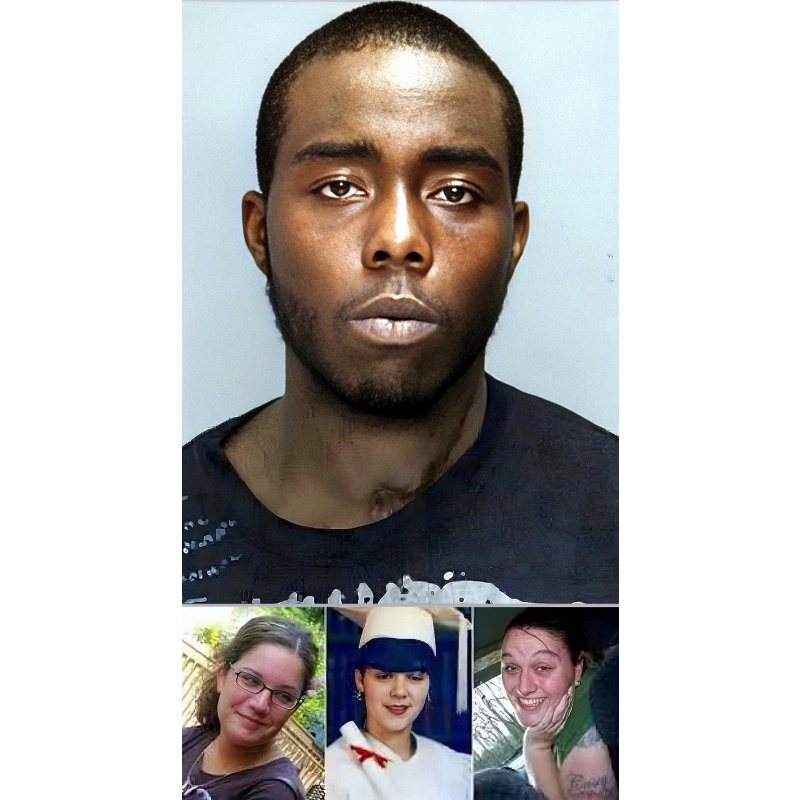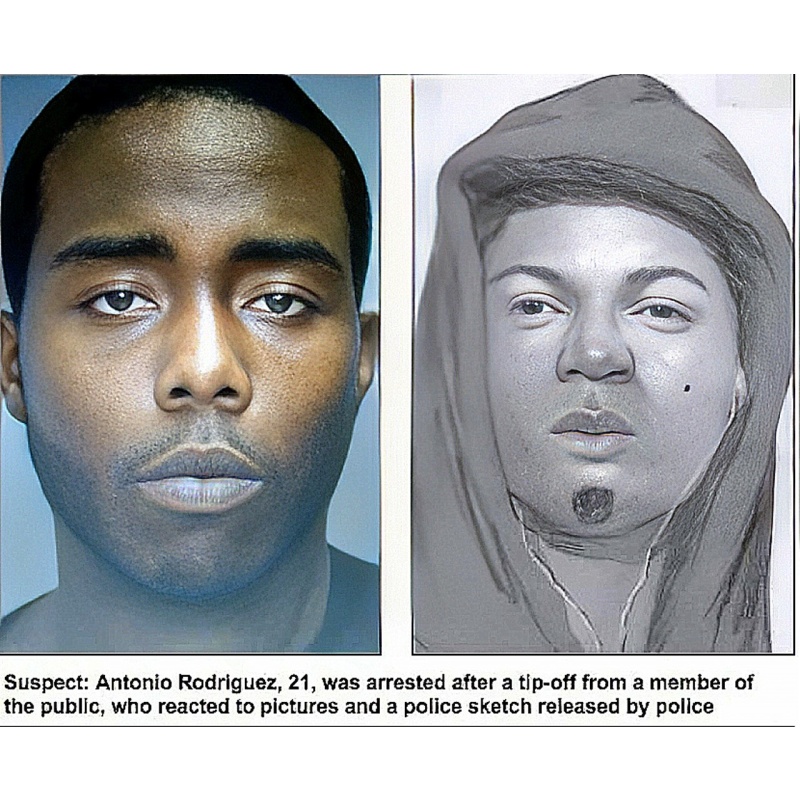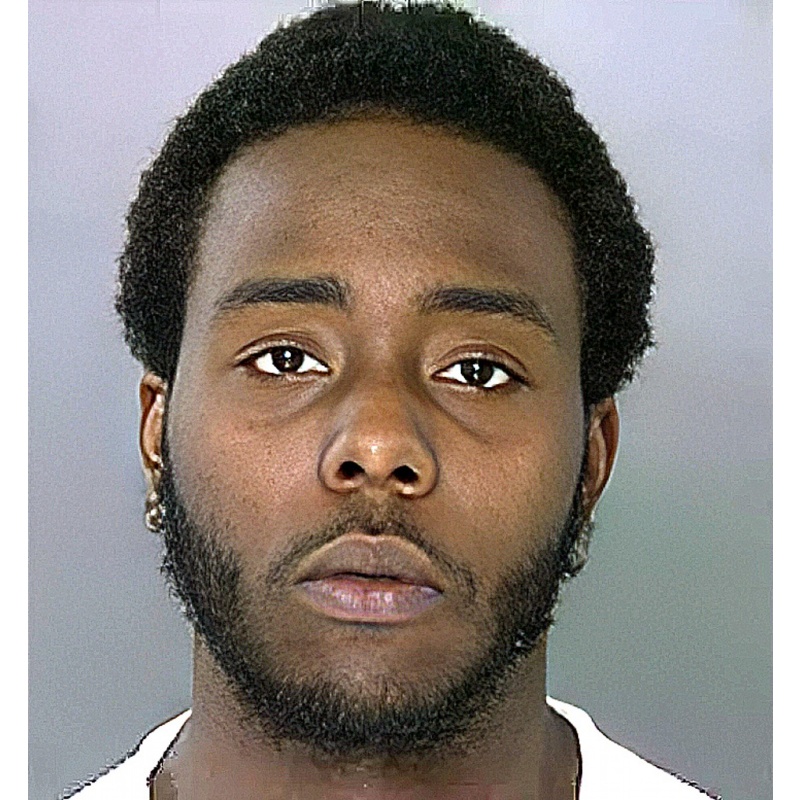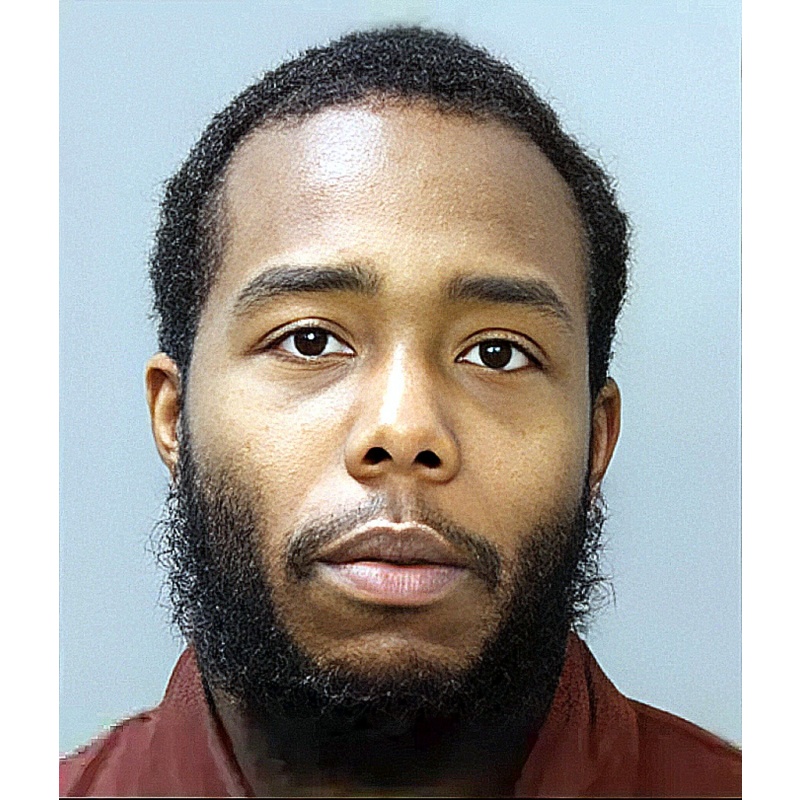ANTONIO RODRIGUEZ | "The Kensington Strangler" | Necrophiliac Serial Killer Raped, Sodomized And Murdered 3 Drug-Addicted Women In the Philadelphia | Autographed Letter Signed
LongfellowSerenade 29
Antonio Rodriguez, often known as the Kensington Strangler, was an infamous American necrophiliac serial killer who committed heinous murders in Philadelphia's Kensington neighborhood from November to December 2010. His first victim was Elaine Goldberg, a nursing student recovering from a substance abuse condition. Nicole Piacentini and Casey Mahoney's bodies were discovered in identical circumstances, prompting public speculation that a serial killer was active in the area. Rodriguez was detained in January 2011, and his DNA matched samples taken from crime scenes, sparking debate about law enforcement's handling of evidence and backlog issues. He was found guilty and sentenced to life without parole.
She was partially clothed,
her bra and her shirt were around her neck.
She was on all fours,
which was very unusual,
like someone had positioned her that way.
… she had been raped and sodomized,
both before and after her death.
$60.00
- Postage
-
Standard Shipping
$0.00 to United States
Get Additional Rates
- Select Country
- Zip/Post Code
- Quantity
Description
Antonio Rodriguez. Autographed Letter, Signed. Handwritten, Commercial #10 (4.125 × 9.5 envelope). Centre Hall, PA. February 13, 2025. Content unknown. SEALED.
The Kensington Strangler: The Crimes of Antonio Rodriguez
Antonio Rodriguez, infamously known as "The Kensington Strangler," was born on October 28, 1988, in Philadelphia, Pennsylvania. As of February 2025, he remains incarcerated at the State Correctional Institution – Rockview in Benner Township, Pennsylvania, serving multiple life sentences for his heinous crimes.
Background
Details about Rodriguez's early life, family background, and education are sparse. Prior to his arrest, he was a homeless vagrant in Philadelphia's Kensington neighborhood. His criminal history includes a felony drug charge, for which he served a three-month sentence at the Curran-Fromhold Correctional Facility, culminating in his release on August 29, 2010.
Criminal Activity
Between November and December 2010, Rodriguez embarked on a violent spree in Philadelphia's Kensington area, targeting women in a series of brutal assaults and murders. His known victims include:
Elaine Goldberg: A 21-year-old nursing student at Gwynedd Mercy University, found half-naked in a parking lot on Ruth Street on November 3, 2010. She had recently overcome substance use disorder.
Nicole Piacentini: A 35-year-old sex worker from Port Richmond, discovered less than a mile from Goldberg's location on November 13, 2010, under similar circumstances.
Casey Mahoney: A 27-year-old from Asheville, North Carolina, found on December 15, 2010, in a wooded area near railroad tracks in Kensington. Like Goldberg, she had struggled with substance use disorder.
Rodriguez's modus operandi involved approaching his victims under the pretense of soliciting their services. During these encounters, he would physically assault, choke, and ultimately murder them. The proximity of the crime scenes—all within a 10-block radius—coupled with DNA evidence, linked Rodriguez to the murders.
Antonio Rodriguez, known as "The Kensington Strangler," not only brutally assaulted and murdered his victims but also engaged in acts of necrophilia. The forensic evidence presented during his trial confirmed that Rodriguez sexually violated his victims post-mortem, a disturbing detail that intensified the horror of his crimes.
Rodriguez’s necrophilic tendencies surfaced as investigators analyzed the DNA evidence collected from the crime scenes. The manner in which his victims were found—stripped from the waist down, positioned in secluded areas, and showing no immediate signs of struggle beyond strangulation—strongly indicated post-mortem sexual assault. This element of his crimes set him apart from typical serial killers who primarily focus on the act of murder itself.
His motivations remain speculative, but psychologists suggest that Rodriguez’s necrophilic actions stemmed from a deep-seated desire for absolute control over his victims. By engaging in such horrific acts, he ensured complete dominance, rendering his victims powerless even in death. His lack of remorse during interrogations and his casual confession to the murders further underscored his psychopathic disposition.
The revelation of his necrophilia shocked not only the public but also law enforcement, reinforcing his status as one of the most depraved killers in Philadelphia’s recent history. This gruesome aspect of his crimes played a significant role in the severity of his sentencing, with the court recognizing the exceptionally heinous nature of his offenses. It also heightened media coverage and public outrage, solidifying Rodriguez’s infamy in criminal history.
Legal Proceedings
The backlog of over 5,000 cases in Philadelphia's DNA processing system delayed the connection of Rodriguez's DNA to the crimes until January 10, 2011. Upon identification, law enforcement swiftly acted, arresting him on January 17, 2011, in an abandoned house's kitchen. Rodriguez confessed to the murders during interrogation. Subsequently, he was charged with multiple counts of murder and sexual assault. In court, he was convicted and sentenced to three consecutive life terms without the possibility of parole.
Impact on Victims and Society
Rodriguez's actions resulted in the tragic loss of three women, each with unique backgrounds and aspirations. The brutality of the crimes instilled fear within the Kensington community and garnered extensive media coverage. Public outcry emphasized the need for improved safety measures and support systems for vulnerable populations, including sex workers and individuals battling substance use disorders. The case also highlighted systemic issues, such as the significant DNA processing backlog, prompting discussions on resource allocation and procedural reforms within forensic departments.
Current Status
As of February 2025, Rodriguez remains incarcerated at the State Correctional Institution – Rockview. There are no public records indicating his participation in rehabilitation programs. Given the nature of his crimes and life sentences, his release is improbable, suggesting minimal future risk to society.
Conclusion
The case of Antonio Rodriguez underscores the critical importance of timely forensic processing and the provision of support services for at-risk communities. Addressing systemic delays and offering resources to vulnerable individuals are essential steps in preventing similar tragedies.
Additional Note
Due to the notoriety of his crimes and his continued incarceration, obtaining an autographed item from Antonio Rodriguez is exceedingly rare. Such items may hold significant value for collectors specializing in criminal memorabilia.
VIDEO: Kensington Strangler | https://youtu.be/guNgFfJnTgc
VIDEO: 21-Year-Old Murdered by Necrophiliac Kensington Strangler | Philly Homicide (S1 E4) | Oxygen | https://youtu.be/dx6CsODSijE
Archiving Protocol:
• Handled with White Gloves ab initio
• Photo Pages/Sheet Protectors: Heavyweight Clear Sheet Protectors, Acid Free & Archival Safe, 8.5 × 11, Top Load
• White Backing Board – Acid Free
Shipping/Packaging: Rigid Mailer 9.5 × 12.5. White, self-seal, stay-flat, Kraft cardboard, no bend. Each rigid mailer is made of heavy cardboard, which has strong resistance to bending and tearing. Thicker than the USPS mailers. Shipping cost never more than it absolutely has to be to get it from me to you.
Payments & Returns
- Payment Methods
- PayPal, Money Order
Postage & Shipping
- Item Location
- 49858, Michigan, United States
- Ships To
- Worldwide
- Pick-ups
- No pick-ups
- Shipping Instructions
- Shipping costs to international destinations will be applied to this auction. Please contact us if you have any questions about shipping to your location.
- Returns Accepted
- No








-500x500.jpg)
-500x500.jpg)
-500x500.jpg)
